The Performing Arts Center of Los Angeles County
The Music Center (The Performing Arts Center of Los Angeles County) had its formal conception in April of 1995 when Dorothy Chandler, the wife of publisher Norman Chandler, was named to the Los Angeles County Board of Supervisors to head a committee tasked with building a home for the Los Angeles Philharmonic. Construction on the complex began on March 12, 1962, with a formal opening on December 6, 1964 and completion of the complex in 1967. The original three venues were the 3,197-seat Dorothy Chandler Pavilion, the 739-seat Mark Taper Forum, and 2,000-seat Ahmanson Theatre. The Walt Disney Concert Hall, which was designed by Frank Gehry and opened in 2003, is actually four separate venues: a 2,265-seat concert hall, a 266-seat legit theatre, a 300-seat children's amphitheater and a 120-seat amphitheater. (The Music Center)
Jane Jacobs (1916-2006) was a fervent critic of New York's Lincoln Center, which emerged at the same time and from the same philosophy as the Los Angeles Music Center. Jacobs (1961, 167-168) asserted in her book The Death and Life of Great American Cities that public buildings are "chessmen" that need to be employed in concert with other types of buildings to create vibrant neighborhoods. The urban planning mistake of post-WW-II modernism was to see them like factories, which needed to be segregated into districts for the betterment of the community. Business districts need entertainment venues to give the communities life after business hours. Likewise, entertainment venues need commercial buildings to keep them active (and safe) during the day.
On my visit to the plaza, I was surprised to see vibrant, mixed crowds milling around the fountain. However, something seemed odd about the symmetry of the motion and when the PAs yelled "cut", I realized that I had stumbled into a film shoot. Hollywood was attempting to create the illusion of daytime life that, as Jacobs observed, could never actually exist in a space that is segregated primarily for nighttime use.
While the space embodies post-WW-II optimism and is not without its merits, it's a place whose sunk costs seem to continue to overwhelm the opportunity cost of redeveloping the city in a more heterogeneous, human-scaled manner.
Or as Barry Harris said, "Concert halls play dead people's music."
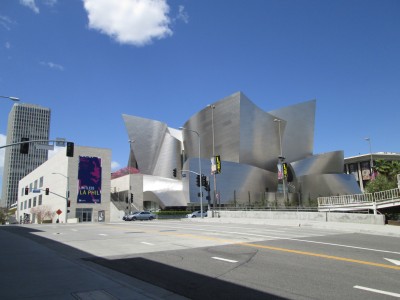
Walt Disney Concert Hall
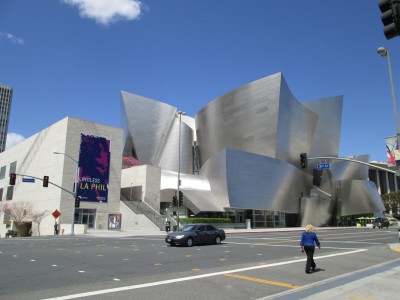
Walt Disney Concert Hall

Walt Disney Concert Hall
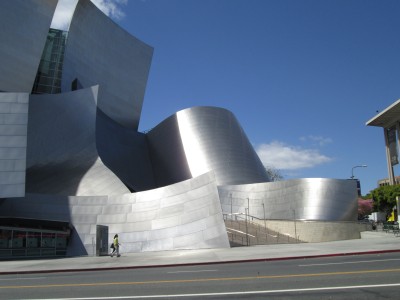
Walt Disney Concert Hall

The Broad - "a new public museum of contemporary art"

Parking, 'cause you can't walk here in a tux

Grand Street in front of Dorothy Chandler Pavilion
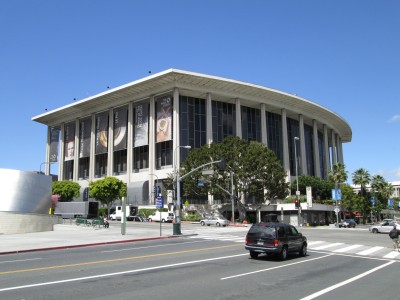
Dorothy Chandler Pavilion
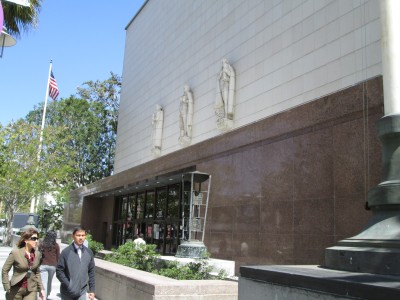
Los Angeles County Sherriff across Grand Street
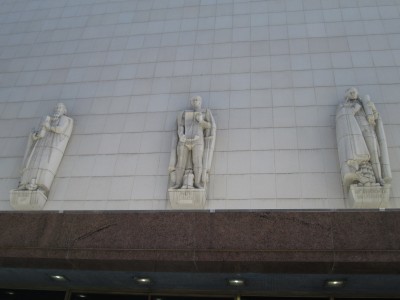
Mosaic Law, Magna Carta
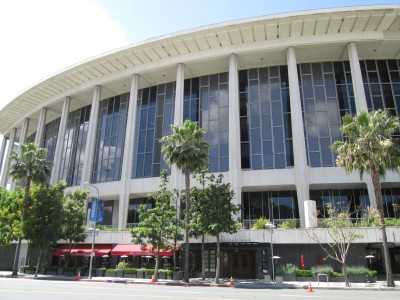
Dorothy Chandler Pavilion
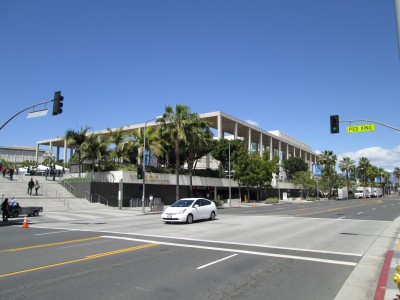
Mark Taper Forum
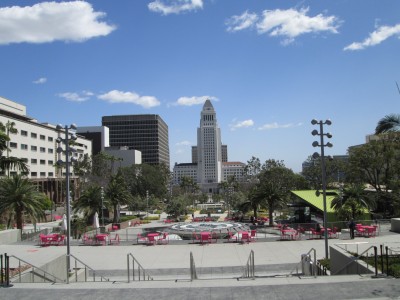
Looking down Grand Park at City Hall
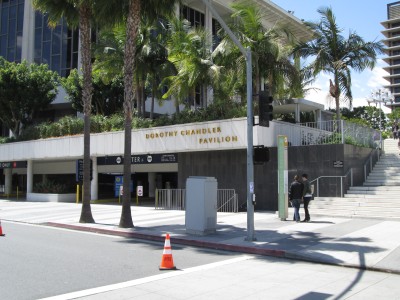
Dorothy Chandler Pavilion

Mark Taper Forum / Ahmanson Theatre

John Anson Ford plaque
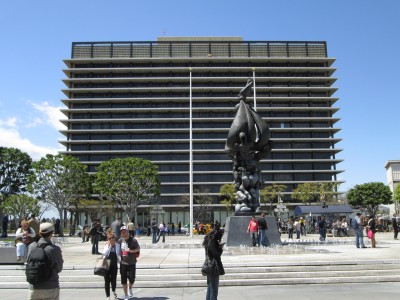
Plaza + film shoot

Plaza + film shoot

Peace on Earth

Peace on Earth - note the hiding production assistant

Extras waiting for action

Music Center Plaza map
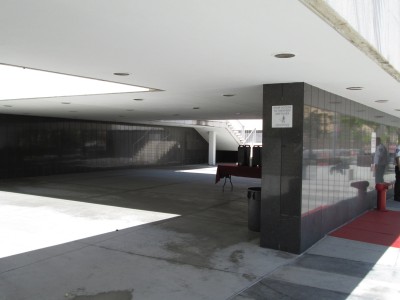
Scary hidden stairway to plaza

Permission to use these premises...
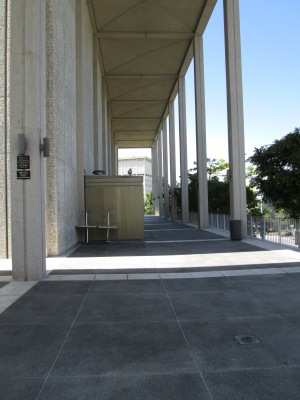
Wall hostile to outsiders on the north side facing Temple St
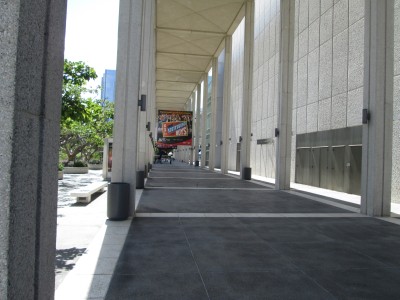
Abandoned colonnade